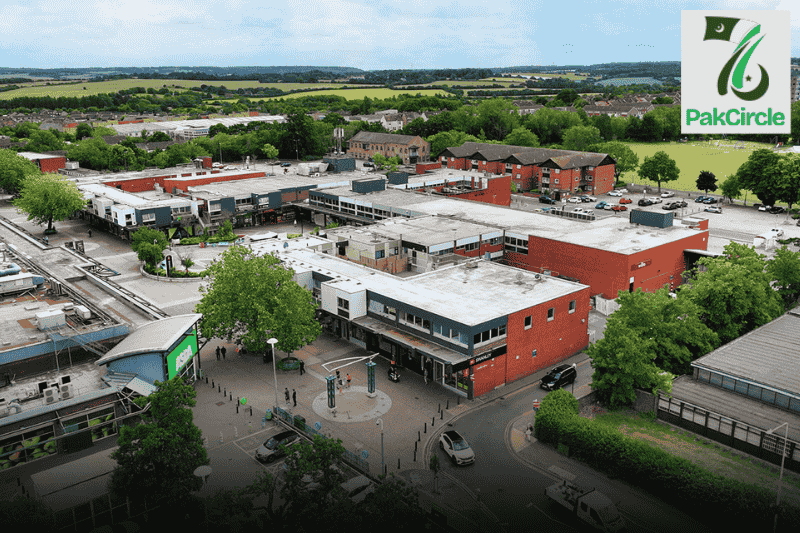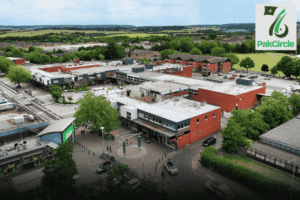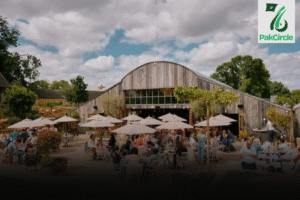Have you ever wondered what it’s like to live, work, or invest in Swanley? This charming town in Kent, England, is more than just a commuter hub for London — it’s a growing community with a fascinating history, beautiful parks, and a promising property market. Whether you’re a traveler planning a day trip, a family searching for a new home, or an investor looking for opportunities, Swanley has something for everyone.
Located just 16 miles southeast of London, Swanley offers the perfect balance between urban accessibility and suburban comfort. With strong transport links, affordable housing compared to nearby boroughs, and plenty of green spaces, it’s no wonder Swanley is becoming increasingly popular among both residents and visitors.
1. Here are some quick facts about Swanley:
| Category | Details |
| Location | Kent, South East England |
| Distance to London | ~16 miles |
| Population | ~17,000 (2021 census) |
| Known For | Parks, commuter town, community events |
| Property Prices | Average £400,000 (2024) |
This complete guide to Swanley will cover its history, top attractions, real estate trends, community lifestyle, and business opportunities. Whether you want to explore things to do in Swanley, research living in Swanley, or learn about Swanley investment opportunities, this article will provide everything you need in one place. Beyond local opportunities, global initiatives also create impact. A good example is the Scotland Pakistan Scholarship 2025 for women, which supports higher education and career development.
2. History of Swanley
Understanding the history of Swanley helps explain how this once-rural village transformed into a thriving modern town. Today, Swanley is known for its strong transport links, attractive housing, and vibrant community, but its roots go back centuries.
2.1 Early Origins
Swanley began as a small agricultural settlement in Kent. The name Swanley is believed to derive from “Swān-lēah,” meaning “a clearing frequented by swans.” For much of its early history, it was little more than farmland with scattered cottages and smallholdings.
The community remained small and quiet, with agriculture at its core. Residents grew crops and raised animals to support nearby towns and villages.
2.2 The Railway Era – A Turning Point
The biggest change in It’s history came in the 19th century, when the railway arrived. The opening of Swanley Junction in the 1860s transformed the area from farmland into a bustling town.
- The railway connected Swanley directly to London, making it attractive to commuters.
- The population began to grow rapidly as workers and families moved in.
- Local businesses such as shops, inns, and markets sprang up to serve the new residents.
This was the foundation of modern It’s identity as a commuter town.
2.3 Swanley in the 20th Century
The 20th century saw Swanley evolve further:
- Housing Estates: New residential developments provided homes for London commuters.
- Community Growth: Schools, churches, and healthcare facilities were built to support the growing population.
- World Wars Impact: Like much of Kent, Swanley was affected by both World Wars, with many residents serving in the armed forces.
By the mid-1900s, Swanley had become a suburban hub, balancing rural charm with urban convenience.
2.4 Modern-Day Swanley
Today, Swanley is a town of around 17,000 people. It has:
- A thriving property market.
- Strong schools and healthcare services.
- Popular green spaces such as Swanley Park.
- Community events like the Swanley Fireworks Display and Carnival of Light.
Despite modern growth, Swanley retains much of its community spirit and green surroundings. It continues to attract families, commuters, and investors who want to enjoy life close to London without the high costs of city living.
2.5 Why the History of Swanley Matters for Today
Knowing It’s past highlights why it’s such a unique place today:
- Its railway roots explain why it remains a top choice for commuters.
- Its agricultural heritage is reflected in the green spaces and parks that residents still enjoy.
- Its community growth over time shows how Swanley has adapted to changing needs while maintaining its identity.
For anyone interested in living in Swanley or considering property investment, understanding this history adds valuable context.
3. Travel & Attractions in Swanley
Although it’s best known as a commuter town, Swanley has plenty to offer visitors and residents who want to enjoy nature, family activities, and community events. Whether you’re looking for a peaceful day in the park, fun family entertainment, or easy access to nearby London attractions, Swanley delivers a well-rounded experience.
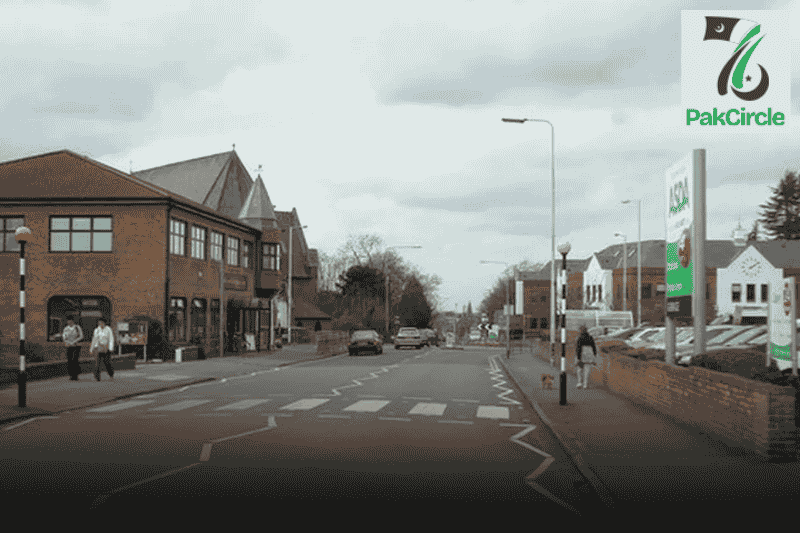
3.1 Swanley Park – The Heart of the Town
The most popular attraction in Swanley is undoubtedly Swanley Park. Spread across 60 acres of open space, it’s a favorite spot for families, fitness enthusiasts, and anyone looking to enjoy the outdoors.
Highlights of Swanley Park:
- Lake with Boats: Visitors can enjoy pedal boats, canoes, and model boating.
- Miniature Railway: A fun ride for children and families.
- Playgrounds: Multiple areas designed for different age groups.
- Sports Facilities: Football pitches, tennis courts, and fitness areas.
- Seasonal Events: Summer fairs, open-air concerts, and fireworks displays.
Swanley Park is especially popular in summer, so plan ahead if you want to avoid crowds.
3.2 White Oak Leisure Centre
For sports and fitness lovers, the White Oak Leisure Centre is a modern facility offering:
- Swimming pools.
- A fully equipped gym.
- Indoor courts for badminton and basketball.
- Group fitness classes such as yoga and spin.
It’s a hub of activity and a great place to maintain a healthy lifestyle while living in or visiting Swanley.
3.3 Swanley Market
Every Wednesday, Swanley hosts a traditional street market in the town centre. It’s a lively event where you’ll find:
- Fresh produce and local foods.
- Clothing, household goods, and unique gifts.
- Stalls that reflect the multicultural flavor of the community.
The market is not only a shopping destination but also a way to experience It’s community spirit firsthand.
3.4 Community Events & Festivals
Swanley takes pride in its annual events that bring residents together. A few highlights include:
- Swanley Fireworks Display: Held every November, this spectacular show attracts visitors from across Kent.
- Carnival of Light: A family-friendly event with illuminated floats and live performances.
- Charity Fun Runs and Local Sports Days: Community-driven activities supporting local causes.
These events highlight the close-knit community culture that Swanley is known for.
3.5 Historical Attractions Nearby
While Swanley itself is modern in character, it’s surrounded by fascinating historical sites:
- Lullingstone Castle and World Garden (6 miles away): A historic manor with gardens featuring plants from around the world.
- Eynsford Castle (5 miles away): A Norman stone castle dating back to the 11th century.
- St. Mary’s Church, Swanley Village: A medieval parish church that connects Swanley to its agricultural roots.
These nearby sites make Swanley an excellent base for history enthusiasts.
3.6 Easy Access to London and Kent
One of It’s biggest attractions is its location. Thanks to the railway and motorway links, it serves as a gateway to both London and Kent’s countryside.
- To London: Only 25 minutes by train to London Victoria, making Swanley perfect for day trips to the capital.
- To Kent Coast: Around 1 hour by train or car to coastal towns like Whitstable or Margate.
- To Bluewater Shopping Centre: Just a 15-minute drive to one of Europe’s largest shopping malls.
This strategic location means that residents and visitors get the best of both worlds — peaceful suburban living with quick access to city life and seaside escapes.
3.7 Things to Do for Families
Swanley is particularly family-friendly, with attractions tailored to younger audiences:
- Play areas in Swanley Park.
- Local farms and petting zoos just outside the town.
- Sports clubs for children, including football and gymnastics.
Parents often highlight It’s safe environment and green spaces as key reasons to live or visit.
Why Visit Swanley?
- Plenty of green spaces for outdoor fun.
- Affordable compared to London attractions.
- A strong community vibe with local markets and events.
- Convenient base for exploring both London and Kent.
Whether you’re planning a day trip, a weekend getaway, or considering moving here, Swanley offers a blend of relaxation, recreation, and community life.
4. Real Estate & Investment in Swanley
Swanley isn’t just a nice place to visit — it’s attracting increasing attention from homebuyers, investors, and people wanting to settle in the commuter belt. In this section, we’ll examine property prices, investment opportunities, trends, and essential considerations for buying or investing in Swanley property.
4.1 Current Property Market in Swanley
Here are some recent data points for It’s real estate market:
- The average property sale price in Swanley over the past year is about £411,809, according to Rightmove.
- Semi-detached homes in Swanley sold for an average of roughly £438,826, while terraced homes averaged around £371,186. Detached homes fetched higher values — in many cases over £570,083.
- Swanley Village tends to be more expensive. The average house price in Swanley Village is approximately £461,278. Semi-detached homes there averaged £486,125, terraced about £353,500, and detached properties around £580,333.
- The average listing price (i.e. what properties are being offered for) in Swanley has seen significant growth: one source reported around £546,920, which is up roughly 10–16% over the last six months depending on property type and location.
- In specific postcode sectors like BR8 8 (St Mary Cray, Swanley), recent trends show prices per square metre varying, with many homes selling between £4,100-£5,270 per sqm for typical properties.
These numbers show a strong and rising market in many parts of Swanley, especially in more desirable areas such as Swanley Village or zones with good transport links.
4.2 Property Types & Which Areas are More Premium
Not all parts of Swanley are equal in terms of property type, price, or desirability. Here’s a breakdown:
| Property Type | Typical Price Range | Features / Pros | More Premium Areas |
| Terraced Houses | ~ £350,000 – £400,000 | Smaller gardens, more dense, often older homes. Good for first-time buyers or smaller families. | Near town centre and transport hubs |
| Semi-Detached Houses | ~ £420,000 – £480,000+ | More space, better gardens, more privacy. Balanced value between cost and comfort. | Suburbs & Swanley Village |
| Detached Houses | ~ £550,000-£800,000+ | Large homes, big plots, often newer or upgraded. Premium finishes. | Swanley Village, Highlands Hill, exclusive developments |
| New Builds / Developments | Varies widely (many £450,000-£800,000+) | Modern amenities, often energy efficient, possibly planning perks. | Highlands Grange, exclusive enclaves near desirable roads |
Areas like Swanley Village, Highlands Hill / Highlands Grange, and roads in or near Hextable tend to fetch premiums. Homes closer to the train station or Swanley centre tend to be more convenient and bring higher demand, which often drives up prices slightly. If you’re interested in how education and recruitment challenges affect communities elsewhere, you may want to read about the KP 5000 investigation into cheating in teacher appointments.
4.3 Investment Potential & Rental Yield
For investment property, Swanley shows real promise. Here are some points to consider:
Rental Yields: In postcode BR8 8, some properties are showing returns of around 4.9%–5.6% per year, especially 3–4 bedroom houses with gardens (Bricks & Logic).
Rental Prices: Average rents in the town centre have grown significantly over the past decade — in some streets up to ~45% increase — though values vary by property type and size (Bricks & Logic).
Commuter Appeal: Properties near the rail station are particularly desirable for renters, especially London commuters. Demand is consistent for smaller family homes and flats in well-connected locations (Jackson-Stops).
4.4 Trends & Challenges
While the local housing market is strong, there are several trends and challenges to be aware of if you’re considering buying or investing.
Trends:
- Price Growth Slowing or Stabilising: Some parts are seeing slower growth, particularly at the lower end of the market. Premium areas continue to perform better.
- New Builds & Exclusive Developments: Higher-spec developments are driving up average listing prices.
- Strong Demand for Commuter-Friendly Homes: Properties with good transport links or access to quality amenities remain in premium demand.
Challenges:
- Affordability: Rising prices push homes beyond what many on average incomes can afford, with large detached houses often exceeding £600,000.
- Mortgage Rates / Interest Costs: Higher interest rates have reduced buyer affordability, especially for those on tight budgets.
- Time to Sell: Higher-priced or less well-located properties may sit longer on the market, with sale prices falling below listings.
- Maintenance & Taxes: Older homes often require ongoing investment in upkeep, and landlords must account for costs such as council tax and property repairs.
4.5 What to Look for When Investing in Swanley
If you’re considering buying here, keep these criteria in mind to make a sound decision:
Transport Connectivity
- Proximity to the train station is a major plus for both rental demand and resale value.
- Access to major roads or motorways boosts long-term interest.
Schools & Amenities
- Strong schools raise property desirability.
- Nearby shops, GPs, and parks add appeal, especially for families.
Property Condition & Age
- New builds may cost more but often require less maintenance.
- Older homes may offer character and higher margins but need thorough inspection.
Plot Size & Outdoor Space
- Gardens, parking, and driveways add premium value. Larger outdoor spaces tend to hold or grow in worth.
Tenant or Buyer Profile
- Rental: Small families, commuters, and professionals working in London.
- Resale: Homes with curb appeal, modern features, and upgrades perform best.
Regulatory Environment & Taxes
- Factor in stamp duty, council tax, and landlord obligations.
- Check planning permissions for extensions or renovations, as these affect long-term value.
4.6 Forecast & Where Prices May Head
Based on current trends, here are some projections for the market:
- Moderate Price Growth: Expect steady but not explosive increases, with premium areas continuing to lead.
- Rental Demand Staying Strong: As people look for alternatives to expensive London living, commuter towns like this remain attractive.
- New Developments Push Averages Up: High-spec new builds will keep lifting overall listing prices.
- Potential Softening in Some Segments: Top-end or less well-connected homes may see slower demand, especially during economic uncertainty.
4.7 Is Swanley a Good Investment Right Now?
Putting the data together: yes — for those seeking property with solid long-term prospects.
The combination of commuter-town convenience, rising property values, and decent rental yields makes this a market worth watching.
Homes that are well-serviced, commuter-friendly, and maintained to a high standard are most likely to deliver strong returns (both in capital growth and rental income).
That said, entry costs are considerable. Detached homes and premium areas demand larger budgets and patience. For smaller investors, flats and semi-detached houses may be more manageable and lower risk.
5. Living in Swanley (Lifestyle & Community)
For many people considering a move, the real question isn’t just about property prices — it’s about what day-to-day life is like. This Kent commuter town offers a blend of suburban comfort, community spirit, and excellent connectivity to London. Families, young professionals, and retirees alike find it appealing for its balance of affordability, green spaces, and amenities.
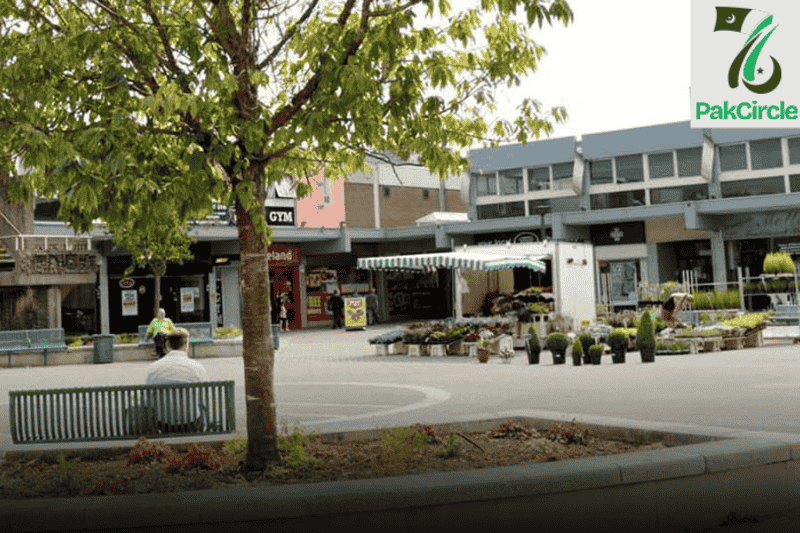
5.1 Cost of Living in Swanley
Situated between London and the Kent countryside, the town’s cost of living reflects this middle ground:
Housing: More affordable than central London, but rising steadily due to demand.
Groceries & Essentials: Everyday costs align with the UK average. Local supermarkets like Aldi, Lidl, and Asda serve residents well.
Dining Out: The area offers a mix of pubs, family-run cafés, and chain restaurants. Prices are lower than London but higher than rural Kent.
Utilities: Average monthly bills for a 3-bedroom home range from £200–£300, depending on energy use.
Overall, life here is more cost-effective than London, making it an attractive choice for commuters seeking value without sacrificing convenience.
5.2 Education in Swanley
For families, education is a key consideration when choosing where to live. The town provides access to good schools at both primary and secondary levels.
Primary Schools:
- St. Bartholomew’s Catholic Primary School – Highly rated for community values and academic performance.
- Hextable Primary School – Popular with local families for its nurturing environment.
- Downsview Community Primary School – Known for inclusivity and strong staff support.
Secondary Schools:
- Orchards Academy – A mixed secondary school with a growing reputation.
- Wilmington Grammar Schools (nearby) – Selective schools accessible to local families.
- Knole Academy (Sevenoaks, nearby) – Another option within commuting distance.
For higher education, students typically commute to London universities or colleges in Kent.
5.3 Healthcare in Swanley
Healthcare services are reliable, with a mix of GP practices, dental clinics, and nearby hospitals.
GP Practices: Swanley Medical Practice and The Oaks Partnership provide primary care.
Dental Services: Several NHS and private dental surgeries are located in town.
Hospitals: The nearest hospitals include Darent Valley Hospital (Dartford) and Queen Mary’s Hospital (Sidcup).
Residents benefit from NHS services as well as private healthcare options in nearby urban areas.
5.4 Transport & Connectivity
One of the area’s greatest strengths is its excellent transport links, which make it ideal for commuters and frequent travellers.
Rail:
- Station connects to London Victoria in about 25 minutes.
- Trains also run to London Blackfriars, St. Pancras International, and Kent destinations.
Road:
Positioned near the M25, M20, and A20, the town offers fast access to both London and Kent’s countryside.
Buses:
Reliable routes connect it with Dartford, Bromley, Sidcup, and other nearby towns.
Airports:
- London City Airport – ~40 minutes by car.
- Gatwick Airport – ~45 minutes by car.
- Heathrow Airport – ~1 hour by car.
This strategic location explains why so many commuters choose to settle here while working in London.
5.5 Community Spirit & Lifestyle
Despite its growth, the town maintains a close-knit, village-like feel. Residents often describe it as friendly, supportive, and family-oriented.
Community Events: The Carnival of Light, local fireworks, and charity fun runs.
Clubs & Societies: From football clubs to gardening groups, there are many opportunities to connect.
Faith & Places of Worship: Multiple churches and community centres serve the diverse population.
Many new residents comment that the area combines the friendliness of a village with the convenience of a town.
5.6 Shopping & Dining
Swanley has a practical mix of shopping and dining options:
Town Centre: Home to supermarkets, local shops, and banks.
Shopping Centres: Bluewater (15 minutes away) provides high-end retail and entertainment.
Dining Options: Traditional pubs (The Chequers, The Lullingstone Castle Inn), international restaurants, and family cafés.
This makes day-to-day living convenient while keeping London’s world-class dining just a short train ride away.
5.7 Recreation & Green Spaces
The area is known for its abundance of green space.
Park: A local favourite for boating, picnics, and family outings.
White Oak Leisure Centre: Fitness, swimming, and indoor sports facilities.
Nearby Countryside: Quick access to Kent’s “Garden of England” landscapes.
Outdoor enthusiasts, families, and retirees all appreciate the peaceful lifestyle that comes with living here.
5.8 Safety & Quality of Life
Residents generally feel safe. While it has the same challenges as any growing commuter town, the overall crime rate is lower than many London boroughs.
Police Presence: Kent Police maintain regular patrols.
Community Watch Groups: Strong neighbourhood involvement helps maintain safety.
Family Appeal: The combination of safety, schools, and green spaces makes the area particularly attractive for families.
5.9 Who Chooses to Live in Swanley?
Different groups are drawn here for different reasons:
Commuters: Affordable housing and fast train connections to London.
Families: Schools, parks, and safe neighbourhoods.
Retirees: Peaceful environment with healthcare access.
Investors: Rising property values and consistent rental demand.
This diverse mix creates a vibrant, well-rounded community.
6. Business & Jobs in Swanley
While many people know this Kent town as a commuter hub, the local economy has its own strengths. From retail and logistics to small business enterprises, the area provides both job opportunities for residents and a supportive environment for entrepreneurs. Combined with its excellent transport connections, the community appeals to job seekers, businesses, and investors alike. Just as the town offers a gateway to London and Kent, students in Pakistan have gateways abroad. One of the most popular options is to study in Japan from Pakistan, and you can explore the complete guide.
6.1 Local Employment Overview
It’s job market is a mix of local service roles, professional jobs, and commuting opportunities.
- Commuters to London: Many residents travel daily to central London for work, thanks to the 25-minute train connection. Popular fields include finance, IT, and government roles.
- Local Jobs: Within itself, employment is strongest in retail, hospitality, healthcare, logistics, and education.
- Self-Employment: A growing number of residents run freelance or remote businesses, taking advantage of affordable housing and fast internet connectivity.
This flexibility makes living and working is an attractive option for both employees and entrepreneurs.
6.2 Key Employment Sectors in Swanley
6.2.1 Retail & Services
The town centre and the weekly market are major employers. Roles include retail assistants, shop managers, and food service staff. With larger supermarkets like Asda and Aldi alongside small local shops, retail remains a consistent source of jobs.
6.2.2 Logistics & Distribution
Its position near the M25 and A20 makes the area a hub for logistics and transport jobs. Warehousing, distribution, and delivery services employ many locals. Proximity to Dartford and Bromley expands opportunities in these fields.
6.2.3 Healthcare & Education
Schools, GP practices, and nearby hospitals provide steady employment. Teachers, teaching assistants, nurses, and healthcare support staff are in consistent demand.
6.2.4 Small & Medium Businesses
From tradespeople (electricians, builders, decorators) to professional services (accountants, consultants), the local business community has a thriving base of SMEs (small and medium enterprises).
6.2.5 Hospitality
Restaurants, pubs, and cafés create a steady stream of part-time and full-time positions. Seasonal work is available during festivals and events like the Carnival of Light.
6.3 Business Environment in Swanley
For entrepreneurs, it offers several advantages:
- Lower Costs than London: Rent for commercial space and overheads are significantly cheaper than in the capital.
- Transport Links: Easy access to London, Kent, and airports make it attractive for businesses needing mobility.
- Local Support: Kent County Council and Sevenoaks District Council offer support for small businesses, including grants and advice.
This has encouraged growth in areas like e-commerce, logistics, and professional services.
6.4 Commuting Options
One of the biggest benefits of working in its location.
- Trains: Only 25 minutes to London Victoria, making it one of the fastest commuter towns.
- Roads: Direct access to M25, M20, and A20 connects it with Kent, Surrey, and beyond.
- Buses: Strong local routes link Swanley to Dartford, Bromley, Sidcup, and other nearby areas.
This makes it particularly attractive for those who prefer suburban living while working in the city.
6.5 Salaries & Employment Trends
Salaries vary depending on industry, but they generally sit between London’s higher wages and Kent’s more modest averages.
| Sector | Typical Salary Range | Notes |
| Retail & Hospitality | £18,000 – £28,000 | Entry-level to management |
| Logistics & Distribution | £22,000 – £35,000 | Drivers, warehouse, supervisors |
| Healthcare & Education | £25,000 – £45,000 | Teachers, nurses, senior roles |
| Professional Services | £30,000 – £60,000 | Accountants, consultants |
| London Commuters | £40,000 – £90,000 | Finance, IT, legal in the city |
More professionals are choosing to live in it and work remotely part of the week, reducing commute time while enjoying lower housing costs.
6.6 Job Opportunities for Different Groups
- Young Professionals: Benefit from affordable starter homes and fast London access.
- Families: Local schools, healthcare, and part-time jobs support family life.
- Students & Part-Time Workers: Retail and hospitality jobs provide flexible options.
- Entrepreneurs: Lower overheads and good connectivity makes ideal for starting a business.
6.7 Future Outlook for Jobs & Business in Swanley
The outlook for jobs is positive, thanks to ongoing development:
- Town Centre Regeneration: Investments in It’s town centre are expected to create new retail and office jobs.
- Housing Developments: New housing estates will attract more residents, boosting demand for local services.
- Green Economy Opportunities: With DHL, Amazon, and other logistics players expanding in Kent, could see more eco-friendly jobs in transport and warehousing.
- Remote & Hybrid Work Growth: More people are choosing its balance of affordability and access to London, while working remotely most days.
6.8 Why Businesses Choose Swanley
Businesses are drawn to:
- Strategic location on the London-Kent border.
- Affordable property and office space compared to London.
- Skilled workforce with both local talent and commuters.
- Supportive councils encouraging entrepreneurship.
This makes it an attractive destination for business expansion and job creation.
6.9 Challenges for the Job Market
Like any town, it faces challenges in its economic growth:
- Competition with London: Many professionals prefer higher wages in the capital.
- Transport Pressure: Peak-time trains can be crowded.
- Retail Shifts: The rise of online shopping challenges traditional high street businesses.
Despite these, It remains a strong option for workers and businesses seeking a balance between cost and opportunity.
7. Practical Tips for Visitors & Residents
Whether you’re planning a short visit or considering living in Swanley long-term, knowing a few insider tips can make your experience much smoother. This commuter town combines the calm of suburban life with the convenience of London access, but like any place, it has its own rhythms and hidden gems.
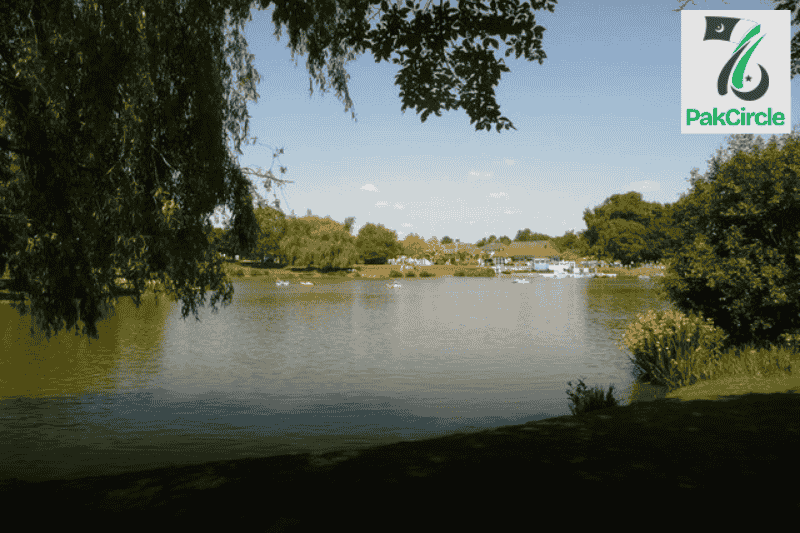
7.1 Travel Tips for Visitors
If you’re coming to the area for the first time, keep these practical travel tips in mind:
Best Time to Visit: Late spring and summer are ideal, especially to enjoy Park at its best. Autumn brings charming local festivals, while winter is perfect for cozy pubs and community events.
Getting There: Trains from London Victoria take just 25 minutes, making the town perfect for a day trip. Driving is also easy thanks to its proximity to the M25 and A20.
Parking: Park and the town centre have designated parking, but spaces can fill up on weekends. Arrive early to secure a spot.
Public Transport: Local buses connect the town with Dartford, Bromley, and Sidcup — useful if you’re exploring the wider area without a car.
Plan Around Events: During major events like the Carnival of Light or Fireworks Display, traffic and crowds can be heavy. Check schedules in advance.
Use it as a base for exploring both London and Kent’s countryside — you get the best of both worlds.
7.2 Moving to Swanley – Tips for New Residents
If you’re relocating, preparation helps ease the transition.
Research Property Options
Decide between the town centre (convenience) or Village (more space and prestige).
Families may prefer areas near schools, while commuters often choose homes close to the station.
Set Up Essentials Quickly
Register with a local GP (Swanley Medical Practice or The Oaks Partnership).
Find nearby dentists, pharmacies, and supermarkets.
School Applications
Apply early for popular primary schools like St. Bartholomew’s or Hextable Primary.
Secondary options include Orchards Academy and Wilmington Grammar (selective).
Transport Planning
If commuting, check train schedules to London Victoria or Blackfriars.
Consider season tickets for cost savings.
Community Involvement
Join local Facebook groups or attend town council meetings to stay updated.
Participate in markets and events — a great way to integrate into the community.
7.3 Cost-Saving Tips in Swanley
Like many towns near London, costs can add up. Here’s how to manage expenses while still enjoying life locally:
Markets Over Chains: Shop at the weekly Market for fresh produce at lower prices than supermarkets.
Commuter Tickets: If working in London, buy monthly or annual rail passes to save up to 20%.
Free Entertainment: Parks, walking trails, and community events often provide fun without the high price tag.
Local Dining: Choose pubs and family-run eateries instead of frequenting London restaurants.
This area balances affordability with access to London — use nearby amenities to keep costs down.
7.4 Safety & Security Tips
The town is generally safe, but being aware always helps:
- Use well-lit routes when walking at night, especially near the station.
- Join or follow neighbourhood watch groups for updates.
- For commuters returning late, pre-book taxis or use reliable bus routes.
7.5 Tips for Families
For families considering living here, a few parent-approved ideas:
Leisure for Kids: Park offers boating, playgrounds, and a miniature railway. White Oak Leisure Centre has youth sports programs.
After-School Activities: Football clubs, dance schools, and martial arts programs keep children active.
Day Trips: Visit Bluewater Shopping Centre, Lullingstone Castle, or the Kent coast for family weekends.
Childcare: Several nurseries and childminders operate locally; it’s wise to book early.
7.6 Tips for Professionals & Commuters
Travel Flexibility: Trains to London can be crowded during peak hours — consider earlier or later trains to save time and stress.
Remote Work Options: If your job allows hybrid work, you can enjoy quieter suburban living while commuting only part of the week.
Networking: Many professionals here join local business groups or Kent Chambers of Commerce for networking.
7.7 For Entrepreneurs & Small Businesses
If you’re considering starting a business:
- Explore support from Sevenoaks District Council, which provides grants and advice for startups.
- Choose central locations or retail spaces near Market for visibility.
- Consider logistics businesses — access to the M25 makes it ideal for warehousing or delivery operations.
7.8 Recreation & Lifestyle Tips
Best Spots for Nature: Park, Lullingstone Country Park, and Darenth Valley are perfect for walks.
Fitness: White Oak Leisure Centre offers memberships, while local clubs cover football, rugby, and tennis.
Social Life: Pubs and community clubs provide friendly, small-town nightlife — quieter than London but appealing for families and professionals.
7.9 Insider Tips Only Locals Know
- The Wednesday Market is a must-visit for bargains and fresh food.
- Park’s miniature railway is hidden fun for kids (and nostalgic adults!).
- Avoid driving near the M25 junctions at peak hours — train or back roads save time.
- The Carnival of Light is one of the best times to experience true community spirit.
Conclusion
From its rich history to its thriving property market and strong community spirit, Swanley is more than just a commuter town. It offers a complete lifestyle package for families, professionals, and investors alike. If you’re planning your next move, searching for an investment, or simply curious about Kent’s commuter towns, Swanley deserves your attention. Just like the swans that inspired its name, Swanley continues to glide forward — calm on the surface, but powered by steady growth and vibrant community life. Are you considering a move to Swanley or have experiences to share about living here? Drop your thoughts in the comments below and share this guide with friends who may be exploring Swanley as their next destination.
FAQs
Is Swanley a good place to live?
Yes. it is popular for its affordable housing compared to London, strong community feel, and excellent transport links to the capital. It’s ideal for families, professionals, and retirees.
How far is Swanley from London?
It is about 16 miles from central London. By train, it takes around 25 minutes to reach London Victoria.
What are the main attractions in Swanley?
The biggest attraction is Park, which has a lake, miniature railway, playgrounds, and sports facilities. The town also hosts the Fireworks and Carnival of Light.
Are schools in Swanley good?
Yes. It offers several highly rated primary schools like St. Bartholomew’s and Hextable Primary, as well as secondary schools such as Orchards Academy and nearby grammar schools.
How much does property cost in Swanley?
The average property price is around £400,000–£420,000. Terraced houses average about £370,000, semi-detached £440,000, and detached homes over £550,000.
What job opportunities are available in Swanley?
Locally, jobs are strongest in retail, healthcare, logistics, and education. Many residents also commute to London for higher-paying professional roles.
Is Swanley safe?
Yes, it is considered relatively safe compared to nearby urban areas. Like any town, it has some issues, but active community groups and Kent Police maintain strong presence.
Does Swanley have good transport connections?
Absolutely. it has fast trains to London Victoria, Blackfriars, and St. Pancras. It also has road links to the M25 and M20, plus bus routes to Dartford, Sidcup, and Bromley.
What is the community like in Swanley?
It is known for its friendly, close-knit community, reflected in markets, events, and local clubs. Residents often say it combines village warmth with town convenience.
What makes Swanley unique compared to other commuter towns?
Unlike some commuter towns, It offers a strong mix of affordability, green spaces, and a vibrant local identity. It balances suburban living with quick access to both London and Kent’s countryside.

